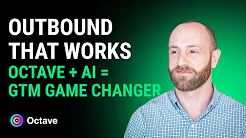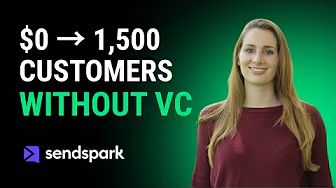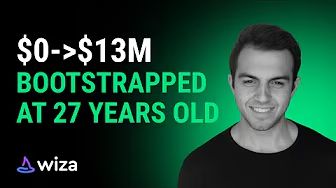
Understory Unfiltered: Octave’s GTM Engine - AI Agents, Contextual Messaging & 10% Reply Rates
Catch up on our Understory Unfiltered episode sharing how Octave’s game changing GTM engine

A step-by-step product launch plan for B2B SaaS teams.
Most product launches with great ideas can still fall short due to poor team coordination. Without a clear product launch roadmap, it can be challenging to align marketing, sales, and product teams around consistent messaging and execution.
This article gives you a structured template for a launch plan built for B2B SaaS products. Across eight steps, you'll move from defining measurable launch goals to optimizing post-launch performance, using the same approach trusted by leading SaaS growth teams. Designed for SaaS leaders managing complex launches, this framework, timeline, and sample RACI chart replaces last-minute chaos with clarity, accountability, and measurable outcomes.
Before you commit a budget or book a single demo, clarify what product launch success looks like for your product and team. Clear, measurable goals give every team a shared finish line and prevent post-launch debates about what "worked."
Define your goals and success metrics using the SMART framework (Specific, Measurable, Achievable, Relevant, and Time-Bound). This structure replaces vague aspirations with precise targets like "Add $50K in new MRR within 60 days of GA" or "Convert 18% of free-trial users to paid plans by day 30." That level of clarity turns planning from opinion-driven to metric-focused.
Plan a variety of SMART goals that show early progress and longer-term business impact. When choosing how you want to measure each goal, consider what different kinds of metrics show:
Focus on several metrics that connect the entire funnel: sign-ups, activation, trial-to-paid conversion, and churn. Map these metrics to your SaaS funnel:
Tie metrics to a company-level OKR, like "Grow net new ARR by 30% this quarter," to help executives understand why the launch deserves coordinated team attention. Likewise, avoid metrics that don't connect to adoption or revenue. Traffic spikes look great in reports but mean little if activation stalls. Run each KPI through this filter before finalizing your choices:
Refine or replace any metric where you answer "no." Remember, sustainable SaaS growth depends on adoption, retention, and expansion, not page views.
The goal here is to translate broad market research into two to four clear, actionable personas you can visualize when writing copy, designing ads, or building demos. Skip this step, and every campaign or asset you create later may feel scattered.
Start by mapping key details for each persona:
Define a hierarchy of personas. Primary personas are budget owners who can approve a $20K+ annual contract. Secondary personas are influencers or evaluators, such as technical users, who shape the deal but rarely own the budget. Keeping this distinction clear prevents messaging drift when channels and campaigns expand.
Before finalizing your personas, run this quick gut check:
If you hesitate on any question, refine or deprioritize that persona.
Next, layer firmographic and technographic data. Company size, growth rate, and current stack (for example, Snowflake + HubSpot) indicate whether a prospect can handle a complex integration or needs a lightweight API. Understory leverages tools like ___ to automate this process, allowing you to qualify leads against your ICP before SDR outreach.
Validate your assumptions with real conversations. Thirty minutes of discussion can uncover insights analytics alone can't provide. Structured interviews make documentation simple and repeatable.
Dialed-in personas give your launch precision. You'll speak directly to the people most likely to buy, reduce wasted spend, and position your high-ACV SaaS product with focus and confidence.
Strong positioning identifies what your ICP accepts as normal, then challenges it. In a recent Understory Unfiltered episode with SmartLead's founder, Vaibhav Namburi highlighted how Uber succeeded by challenging the accepted norm of waiting 15 minutes for a cab. Apply this same principle by framing your product as the solution to a problem they didn't realize could be solved.
Begin by defining a clear value proposition tied directly to your ICP's pain points. Use a simple Feature to Benefit to Outcome reasoning chain to stay focused:
Write five to seven value propositions, then test them with beta users. The phrasing that gets genuine reactions becomes your messaging foundation.
Next, translate this into a messaging matrix for coordinated team alignment. For example:
| Core Message | Proof Point | Objection Handling |
|---|---|---|
| Pinpoint ROI across every channel | 200 pilot users cut manual reporting time by 57% | "We already have BI tools", paired with a 2-minute integration demo |
Maintain consistent phrasing across all touchpoints to reinforce credibility and coherence.
Messaging isn't static. During beta, note which proof points fall flat or what objections repeat. Treat these as sprint items where you update the copy, retest, and finalize only once customers echo your language.
Finally, tailor hooks to each stakeholder. For example, finance focuses on payback, security on compliance, and end users on speed. Keep all tied to your single core promise to maintain narrative clarity.
Strong positioning amplifies every downstream channel. Weak positioning forces you to spend your launch budget fixing clarity that should have been built in.
Your product launch succeeds or fails on channel orchestration. You need a coordinated mix of paid, owned, and earned channels that build momentum together based on their specific strengths:
When aligned, these touchpoints ensure every interaction reinforces the same message.
Use one of three templates to plan the channels to prioritize that match your scope and resources:
This allbound approach keeps every touchpoint connected to a single story and unified attribution model. You spend less time reconciling spreadsheets and more time optimizing what drives the pipeline.
Before finalizing what channels to use, test each against five criteria:
When messaging, offers, and timing align across paid, owned, and earned media, you stop running isolated campaigns and start generating true market momentum.
Most SaaS teams lose time because product launch asset creation starts too late. Begin developing key launch assets at least 4–6 weeks before launch and set weekly reviews to keep production on track.
A strong B2B SaaS launch typically requires these assets:
The sequence of these assets matters.
Ship the landing page first, follow with the demo video, then finalize enablement materials and PR closer to launch for fresh messaging. If you have a lean team, use templates to maintain speed and quality whenever possible.
Treat assets like code deployments. Assign owners, review systematically, and mark "done" only once live. This discipline ensures your launch assets go out complete, consistent, and coordinated.
Complex SaaS launches require clear coordination that can be managed through set timelines and benchmarks to assess progress.
Use a three-phase timeline to establish clear expectations and deadlines for all teams:
Scope also drives timing. Soft launches may fit in four weeks with limited channels, while full-scale launches need at least eight weeks for PR, paid campaigns, and enablement.
Visualize each workstream on a shared Gantt chart to spot resource overlaps early. Assign milestone owners from day one (e.g., "Sales deck approved, RevOps," "Press release scheduled, Comms").
Add three "go/no-go" gates to quickly assess if the project is ready to move to the next phase. One after wireframes, another after final creative, and the last 48 hours pre-launch. This ensures cross-team alignment and time to fix QA issues.
Build a time buffer and keep backup plans ready, like redirecting ad spend to email sequences if creative delays hit.
A clear, visible timeline with owners and contingencies transforms chaos into predictable, coordinated execution.
Even the best product launch plan requires internal alignment. Every team needs clear ownership, fast communication, and training before go-live. Here are useful strategies for alignment.
Consider a RACI matrix to define the team responsible and accountable for doing the work, who should be consulted, and who needs to be informed along the way. This chart can be defined based on team, or by individual team members. Here’s a sample:
| Task | Product | Marketing | Sales | Customer Success | Leadership |
|---|---|---|---|---|---|
| Final feature lock | A | C | I | I | R |
| Launch messaging & assets | C | A | I | I | R |
| Demo script & certification | I | C | A | R | R |
| Day-one support playbook | I | I | C | A | R |
| KPI dashboard setup | A | C | C | C | R |
(A = Accountable, R = Responsible, C = Consulted, I = Informed)
Host a 30-minute Go/No-Go meeting 48 hours before launch. Structure it like this:
Train teams in short, repeatable sessions like product demos, objection handling, and hands-on practice. Certify reps before launch day to ensure message consistency.
Equip frontline teams with an FAQ that covers what's new in this release, your ideal customer and value story, plus common objections and the escalation process.
Finally, maintain daily stand-ups during launch week and weekly reviews afterward for consistent updates and transparency across teams. Continuous alignment keeps execution tight and momentum strong.
A successful launch requires monitoring and adjustment post-launch. Optimization depends on clean data, consistent reporting, and fast iteration. Return to the metrics defined in step one that you are using to measure success.
To prepare for effective monitoring, set up several systems and clarify what you are monitoring prior to launch:
Establish your UTM framework. Every link should reveal the source, medium, campaign, and creative. For instance:
https://yourdomain.com/landing?utm_source=linkedin&utm_medium=paid&utm_campaign=q4_launch&utm_content=demo_ad
Sync these parameters with your CRM to track the full path from click to closed-won. Assign one owner to maintain accuracy.
Use a BI dashboard like Amplitude or Tableau to blend product analytics and pipeline data. Track key product events like signup, activation, first-value moment to monitor real user behavior.
Track leading indicators to measure early traction including click-through rates, demo requests, and activation.
Use lagging indicators to confirm long-term success. Avoid vanity metrics like total impressions unless they connect to measurable business outcomes.
At the 2-week mark, plan to verify that UTMs flow correctly and activation rates exceed baseline. At 30 days, assess ARR, retention, and feedback trends. Review support tickets and churn data for recurring objections or friction points.
Pay attention to how early adopters compensate for missing features. When users build manual processes or external automations to bridge product gaps, prioritize those workarounds for your roadmap. Converting these patterns into built-in features removes adoption friction and strengthens your product positioning.
Use these insights to refine channels and messaging, ensuring adjustments are evidence-based rather than reactive. Feed findings directly into your refinements:
A disciplined feedback loop transforms a single launch into a sustainable growth engine. The allbound approach keeps every signal connected.
B2B SaaS launches demand coordinated execution across paid media, outbound, and creative. Many growth teams waste strategic time coordinating between separate specialists while prospects receive disconnected messaging across touchpoints.
Understory eliminates coordination overhead through expert allbound execution. We coordinate strategic paid media, Clay-powered outbound sequences, and professional creative services for B2B SaaS companies managing complex product launches.
From pre-launch positioning through post-launch optimization, our expert partnership delivers a measurable pipeline without specialist management complexity. Schedule a demo today.

Catch up on our Understory Unfiltered episode sharing how Octave’s game changing GTM engine

Catch up on our Understory Unfiltered episode sharing how SendSpark scaled personalized video with AI

Catch up on our Understory Unfiltered episode sharing how WIZA generated $13M ARR without any venture capital

Catch up on our Understory Unfiltered episode sharing how we helped a brand scale to 35K+ customers